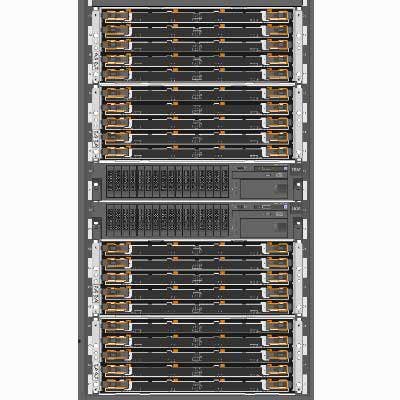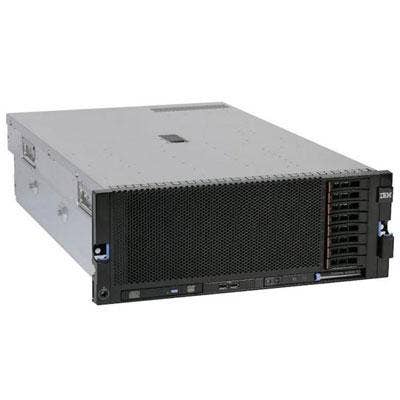Lenovo Channel Chief Q&A: Kinlaw Spells Out Bold New Enterprise Strategy

Hitting The Ground Running
Barely two months in his new role as Lenovo's North American channel chief, Sammy Kinlaw already is facing what could be one of the biggest challenges of his career. He needs to transform Lenovo's 30,000 mostly PC-centric North American channel partners to become enterprise selling machines while not missing a beat when it comes to keeping that blockbuster PC business running smoothly.
Last October Lenovo closed its acquisition of IBM's x86 server business. On April 1, Lenovo said it finished integrating the IBM assets, forming one unified Lenovo and channel. Now comes the hard part -- executing on Lenovo's mission to lead in server sales as it does in PCs.
CRN sat down with Kinlaw, whose formal title is North America channel chief, Lenovo channel sales, and asked him to spell out Lenovo's new enterprise strategy. Here are excerpts of the conversation.

Lenovo is bumping up close to 90 percent channel-driven sales, up from 85 just a few years ago. Where is this growth coming from and how long before you get to 90 percent?
We get there by selling more complex solutions. We are committed to growing our server business 30 percent year over year. We get there by selling more. By selling deeper into existing accounts and wider.
The IBM piece of the business Lenovo bought was about 50 percent channel. We aren't going to do that. As deals get more complex, we are absolutely relying more on our channel. We are going to get there by having one distribution model, one set of programs, one coverage model and one portfolio of products.

How does Lenovo accomplish what IBM couldn't in recent years -- becoming No. 1 in server sales?
Lenovo has a very different take than IBM when it comes to what the expectations are from server partners around growth, programs that incent them and the coverage models.
First off, we like people to be within "windshield time" of their accounts. We don't want people to have to get on a plane to go see their accounts. I want frequent touches and I want partners to be on-site and I want them to participate with customers solving technology problems.
Second, we don't leave anything to chance. Our field reps are out there constantly monitoring where we have penetration and asking: Is the partner selling the right type of product? And if he is not, how do you get him to sell more? Do they need more spiffs, rebates or maybe they need better field engagement?
If we have an underperforming [partner] in a territory, we do something about it.

What are the incentives to drive server sales?
We bought System x and we are going to make it work. And the way we make it work is to get these proven sellers up and running with those products.
But let me be absolutely clear. We are definitely going after the corporate space. Those are companies with a thousand or more seats. So, for the first time ever Lenovo's field reps and the channel are both focused on server.
Field reps can't make quota unless they sell server. Those guys that have been flying high on just PCs for years on end, those guys now have a new challenge. They now have to get their customers that they have been calling on for years to buy server now. That's a big difference for us.
They have to sell PCs in a big way, but they have to sell server now as well.

For many of your existing partners, Lenovo's influx of enterprise solutions is brand new. How do you spark sales growth and enable partners to take advantage of the total addressable market?
It starts with our channel reps. And then our 30,000 partners in North America that are authorized to sell Lenovo. How do we reach them and make them aware of the breadth of partner offerings?
Over the past six months we had to look in the mirror and ask ourselves: Do we have the right type of reps? Do we have the education for those reps? Can they scale? Can they learn server? We have put a heck of a lot of time into training these guys to make sure they can speak to scale from an entry-level print server all the way through the database. And we have done that and those reps are out there now and they are being supported by Lenovo field engineers that will help with complex solutions.

Are field engineers new to Lenovo?
This is something new. We have never had field engineers assigned to partners or field reps. It's a new initiative and brings a considerable amount of new people covering North America. They will be working with partners and DMR business, helping us grow complex opportunities.
There are roughly 40 of these solution architect reps that are paired with roughly 200 channel reps in North America. That's a lot people for us.

Who are these field engineers and what's their new role?
We don't expect our field reps to be field engineers. They are generalists. They have to be able to sell server and PCs adequately well. So we have also added to our channel coverage model an entire team of field engineers that are assigned to our partners to help with complex opportunities.
Some will help a traditional Lenovo partner who was selling PCs and maybe a few servers. They might need architectural help selling complex opportunities. Field engineers are there to help with competitive RFPs, to help the channel with complex architecture, they will help with pre and post-sale support.
It's a stake in the sand for us. We know there is complex opportunity out there and field engineers are there to help partners.

What are the expectations around server growth?
The reason we are doing this is because our expectations are so high. We are asking our channel to grow the server space 30 percent year over year. So for me to grow 30 percent year over year, I have to have revamped programs and new coverage models in the field. I have to have technical sales assistance and I have to have all the distributors heavily engaged to their targets.
The overall server market may grow slightly in x86 architecture. But it's Lenovo's goal to grow at a premium to the market at a rate of 30 percent year over year. That's a big deal. That's our goal for our fiscal year that started in April.

Where does Lenovo see that growth opportunity in the market?
Some of it is net new and some of it comes from our competition. We are going to go deeper and wider. And we are going to encroach on our competitors.
The lowest-hanging fruit for Lenovo to grow our server business is in the top-seller space and the SMB market. Look for top-seller server models to be discounted up front, on the shelf, with rebates and available for new customer bonus. All the engines of Lenovo are behind the top sellers.

Can top sellers do for servers what they did for PCs as solutions get more complex?
Yes. The top seller is a standard server. Partners can by a top seller that is heavily incented and customize that solution by adding storage, networking or put something together in the converged space. It falls right in line with our strategy.
Sure, there will still be custom to order, but our top sellers offer partners highly incented hardware through distribution with fast turn delivery. It's the lowest-hanging fruit and it will work.

Partners say it was not a walk in the park with IBM to get product in a timely manner. They were hoping for things to be easier with Lenovo. It's not a lot easier yet, they say. What challenges are you guys facing?
There are avenues in System x within the corporate custom space where we did have some initial struggles. But we believe we have rectified that. We are opening a brand-new manufacturing facility in Monterrey, Mexico. The efficiencies that we know within PCs we are going to capitalize on and put into System x server.
On top of that, we are going to grow the number of top sellers and have more of those products on the shelf. If you order a custom config with a quantity over five and it's a similar model to a top seller, we are going to encourage you to buy the top seller and customize it.

What's your biggest challenge within the channel?
Communication. A typical Lenovo partner knows pieces of Lenovo's product portfolio. Even some of Lenovo's most seasoned partners can't keep up with everything Lenovo has to offer. We need partners to take advantage of it all.
We are going to train partners on our distribution model, coverage model, the program stack and the Lenovo product portfolio. What I know from calling on customers is they know bits and pieces. But partners need to know that we can help them with their business. We have to make sure our reps are out there and doing the right thing to make sure partners are taking advantage of all the new opportunities at Lenovo to help them grow their business.

Are you actively recruiting Dell and HP partners, just as they were recruiting your partners while you were in the middle of buying the IBM x86 business?
It's not a stated strategy to steal partners or customers. We chose a different route. We capitalize on our own advantages and then from there we position our distributors and our reps to go wider to help us find more partners.
Yes, I want to grow the number of server partners and PC partners by a big margin. I want more partners. I want to grow the number of server partners by 2,000 in North America.

Why should solution providers want to partner with Lenovo vs. Dell or HP?
We have been a channel-first company where others have wavered. Now, we are doubling down on that partner strategy.
We are looking at what the competition is doing every day. We are constantly making sure we have the right business model, the right programs and the right products on the shelf. By doing that we help our partners make more money. We are growing faster than the entire market in key areas like PC sales. We are making partners more money and we are close to a 90 percent channel company. And we want to take that winning formula to servers in a big way.